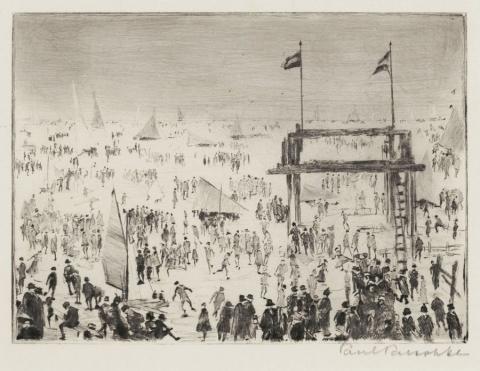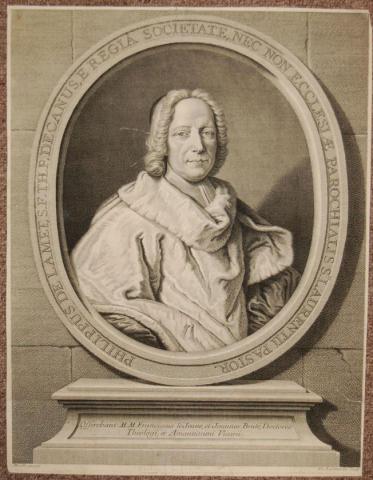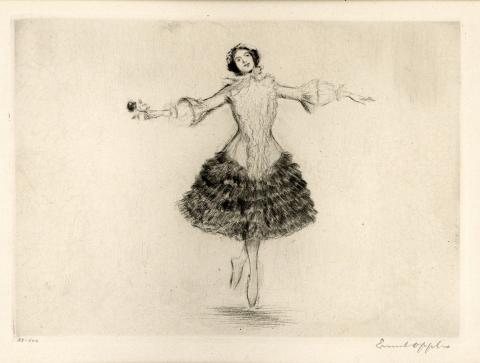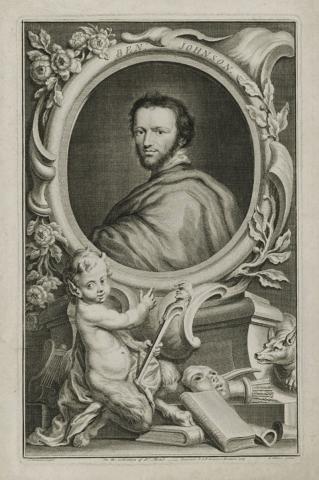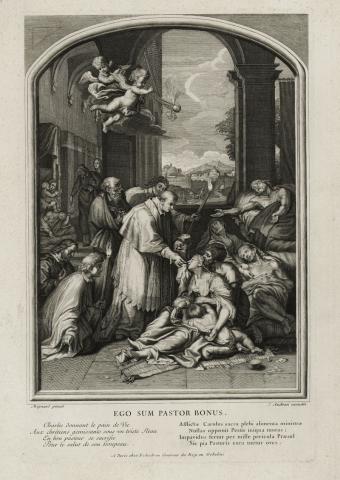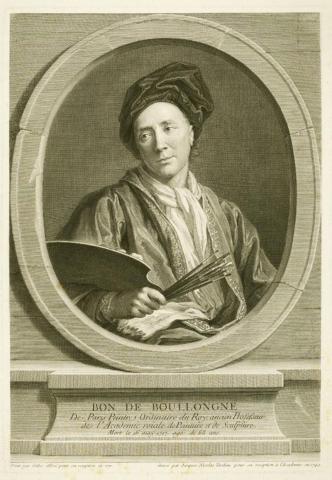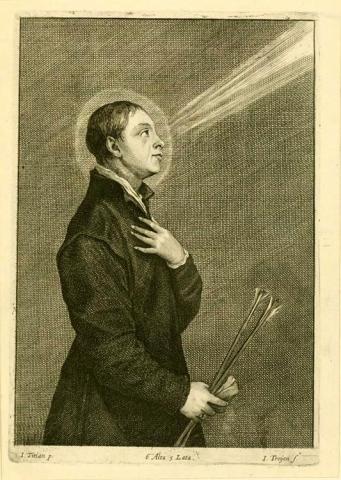This original etching by Paul Paeschke measures 6 1/4 x 8 3/4 inches and is pencil signed. Paeschke studied at the Academy of Fine Arts in Berlin under Karl Kopping. He traveled extensively through Germany and other European countries. He mainly depicted the busy inner-city streets of Berlin and other cities and so he became an important chronicler of public life during the early 20th century. Paeschke created numerous masterly etchings, which can equally be placed next to the graphic works of Max Liebermann, Max Slevogt or Lesser Ury.
Prints
Nicolas de Larmessin
Engraving after Merelle. Randall 13952. Image size 16 1/4 x 12 5/8 in, sheet 16 5/8 x 12 3/4 in.
Sir William Nicholson
Color woodblock, image size 13 9/16 x 10 13/16 in, signed in pen lower left
Ernest Oppler
This is a pencil signed etching by German artist Ernest Oppler. The title is: Coquette, created and printed in 1921, numbered 33/100. The image measures 5 3/4X8 1/8 inches. Printed on a medium weight wove type sheet. Oppler did not seek to portray “dance” as a concept, but rather the distinct personality of each dancer while on stage. Because of this, he became very familiar with some of the greatest ballet stars of the era such as Anna Pavlova, Vaslav Nijinsky, and Tamara Karsavina. His obsession with capturing dancers in motion became so great that he even developed a lighted pen in order to sketch in darkened theaters during performances.
Eugene-Paul Metour
This is a richly inked original etching of the town of North Adams in Western Massachusetts. Image size 10 3/8 x 7 1/4 inches, 1923, signed, titled and dated in the plate, pencil signed and titled.
Jacobus Houbraken
Engraving after I. Oliver, 1738, image size 14 3/16 x 8 7/8 in, sheet 17 1/2 x 12 1/2 in
Joseph Pennell
This image by the American artist Joseph Pennell measures 8 x 11 inches, unsigned proof, 5/5, cat: Worth-366, 1910, Frederick Kepppel label on back. Pennell was an important American etcher, lithographer and illustrator. Good friends with James McNeill Whistler, he and his wife co-authored his biography. Pennell was known for his continued experimentation with technique and style, producing cityscapes, landscapes and marine scenes.
Percival Gaskell
This is a drypoint etching by British artist Percival Gaskell. The title is Ravaged Hillside, created circa 1920, this view of hillside with cut trees from an extensive logging operation. The image measures 8X11 1/8 inches. Hand signed by the artist in pencil. Printed with a warm toned ink on a medium weight wove type paper.
Gerard Audran
Engraving after Mignard, image size: 12 1/4 x 8 7/8 inches, sheet size: 18 1/2 x 12 3/4 inches, Fogg Museum provenance, Randall collection #4065
John Winkler
This is an original etching by California artist John Winkler. The title is: Delicatessen Booth, San Francisco, created circa 1920 this etching is hand signed in pencil lower left border. The image measures 11X6 1/2 inches. " Winkler studied at the California Institute of Arts and published his first original etching in 1915. During the following eight years he established a large national reputation for his etchings, the great majority being depictions of San Francisco and its environs...Like Whistler, Winkler had the ability to capture life and movement with the utmost simplicity." T.O.P.
Jean Frélaut
Pencil signed in the lower left corner, etching measures 4 3/8 x 9 1/8 inches on laid-type paper.
Jacques Nicolas Tardieu
Engraving after Gilles Allou, 1749, image size 13 5/8 x 9 3/8 in, sheet 19 1/8 x 15 1/8 in, Randall 3665, Fogg Museum provenance
Jean Jacques Avril
An original engraving by Jean Jacques Avril after the painting by Dutch artist Nicolaes Berchem (1620-1683). The image size is 18 5/8 x 26 5/8 inches, printed by C Weisbrod in 1776, with thread margins.
Stanley Anderson
This is a fine Ex Libris book plate illustration by British artist Stanley Anderson. This engraving of fishing equipment was done for H.C. Drayton, pencil signed by Anderson and with a stag circular blindstamp in the lower right corner of the border. The image measures 4 1/4X3 1/4 inches.
Pagination
Copyright 2021· All rights reserved

